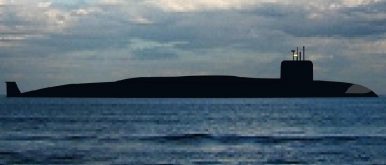By Robert Farley
 As news emerged of an accident that may have damaged INS Arihant, it’s worth considering just how difficultgetting a sea-based nuclear deterrent off the ground (or under the sea) can be. India has embarked on the pursuit of an SSBN force much differently than any previous nuclear power, and even other navies have struggled to make it work. The idea of putting part of a nuclear deterrent on submarines emerged in the 1950s, as the United States and the USSR experimented with arming diesel-electric boats with rudimentary cruise and ballistic missiles. The value of nuclear propulsion was immediately obvious, as it allowed subs to remain on patrol for long periods of time.
As news emerged of an accident that may have damaged INS Arihant, it’s worth considering just how difficultgetting a sea-based nuclear deterrent off the ground (or under the sea) can be. India has embarked on the pursuit of an SSBN force much differently than any previous nuclear power, and even other navies have struggled to make it work. The idea of putting part of a nuclear deterrent on submarines emerged in the 1950s, as the United States and the USSR experimented with arming diesel-electric boats with rudimentary cruise and ballistic missiles. The value of nuclear propulsion was immediately obvious, as it allowed subs to remain on patrol for long periods of time.
The U.S. Navy was remarkably successful in getting its sea-based nuclear deterrent under way. After experiments with diesel subs, the USN ordered construction of the George Washington class SSBN, a five boat group based on the Skipjack class SSNs. The first George Washington, carrying 16 Polaris SLBMs, entered service in 1959 and remained active until the 1980s. Later USN SSBNs built on the same successful template.
The British experience was similar to the American; the four Resolution class SSBNs (based on the ValiantSSNs) were ordered in 1963, and entered service between 1967 and 1969. Carrying 16 Polaris missiles, these subs remained in service until the 1990s. France’s program was somewhat slower; five boats of the Redoutableclass were built between 1963 and 1980, each carrying 16 MSBS missiles, with the first boat entering service in 1971. Unlike Britain and the United States, France attempted to embark on the construction of SSBNs before establishing an SSN template.
For the Russians and the Chinese, things went harder. The eight Project 658 boats (NATO designation Hotel), the first Soviet SSBNs, began entering service in 1960, following experimentation with various diesel-electrics. A rough combination of the November class SSNs and the Golf class SSBs, the Hotels carried three short-range SLBMs and were not generally competitive with the George Washington class. These early boats did not offer much of a credible deterrent, given their noise and the fact that they needed to deploy close to the U.S. coast. The first serious SSBNs, the Project 667 boats, began to enter service in 1967. The Soviets lost one SSBN in service and suffered problems with several others.
China laid down its first SSBN in 1978, having developed experience with a former Soviet Golf class boat and with the Han class SSNs. Completed in 1981, the Type 092 submarine has drifted in and out of service for the past 30 years, but reportedly has never conducted a patrol outside Chinese waters. A second submarine of the type was rumored lost in 1985, but this has never been confirmed.
In retrospect, the George Washington class SSBNs were a fabulous engineering success, entering service quickly, with few problems, and packing a huge punch. All of the NATO boats were relatively quiet and could threaten the USSR from long-range. On the other hand, it took the USSR nearly a decade to produce a meaningful deterrent boat. It has taken China nearly three decades, despite extensive experience in both countries in submarine construction and operation.
This stuff is hard. The Indian experience has been particularly difficult because India has never constructed a nuclear submarine before, has never operated an SSB, and has very limited experience with nuclear attack subs. As Ankit Panda points out, the Indian submarine force has experienced other maintenance and performance issues. It is not surprising that problems have dogged INS Arihant, and it brings up questions about how much India should invest in a sea-based deterrent.
No comments:
Post a Comment